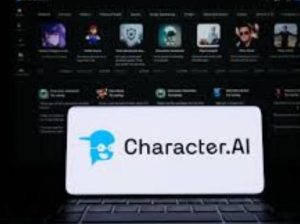AI Characters in Chat Platforms

Training AI Character on Chat Platforms
AI chatbots - AI characters, have come a long way from the basic scripted responders, now they can engage in more meaningful conversations with users. These examples illustrate how far AI-driven characters can reach within the broader spectrum of customer service, entertainment, and even mental health support. Leveraging advancements in natural language processing (NLP) and machine learning (ML), bots are now more complex than ever and in some ways relate to humans.
AI character defined + columns for what key technology contributes to that aspect of AI character
At its heart, programming AI hologram characters comes down to advanced long-form transformers that think in language. Some of the basics to use NLP in: Lets jump to some of the fundamentals that make up an NLP technique like tokenization, sentiment analysis, entity recognition and so on. Typically, OpenAI's GPT (Generative Pre-trained Transformer) models are trained for these characters using heaps of text data to try to get human-like responses.
These datasets, primarily consisting of dialogues and text samples, can span from even hundreds of gigabytes to terabytes on which machine learning models are trained. This training gives AI characters the ability to understand what is being talked about in a conversation, and with that understanding they can respond, not just in contextually understandable ways but also emotionally resonant ways.
Creating AI characters with personalities
With supernatural beings, AI figures, character-aided stories, we need quite a few dizzying personalities built in the characters. To give AI a constant, believable personality, developers often use psychological models twice the Big Five personality traits. It ensures that an AI character can always behave consistently in the same conversation style and it is crucial for user trust and engagement.
For instance, an AI programmed for customer service in a tech company would be more of the kind and knowledgeable but also patient personality type while one fetched for a character on gaming chat could exhibit itself as playful and competitive. Personality customization improves the overall interaction experience for users, making it more enjoyable and impactful.
Problems and ethical issues
However, making AI characters for chat platforms has its own set of challenges. The AI community is currently debating ethical concerns such as privacy, data security, and the risk of perpetuating biases in AIs. A human-like voice for AI characters protection of user reputation and data privacy.
Moreover, the difficulty software developers are confronted with trying to prevent bias in AI responses fails for a well-known reason - biased training data. Maintaining inclusive and neutral AI characters involves a constancy of oversight, making continuous adjustments to the training processes and data sets.
Future Trends and Innovations
The future of AI characters is quite bright as AI and ML technologies continue to advance. Finally, new technologies, such as emotion recognition and adaptive learning algorithms, may soon make AI characters even more interactive and human-like. These innovations will allow AI characters to understand not just text but their voice inflections and facial expressions as well, making interactions feel more human.
Over time, the role of AI in chat will only grow, creating a gray area where human and machine interaction is overlapped and campaign creators can create consumer-level communication experiences that are more personal and interactive than ever before.
Say Hello to Dynamic AI Characters
To feel the future of chat technology, discover character ai chat where AI characters provide the concerning interaction with an element of individual engagement thus one-ups what a virtual conversation is ideal for.